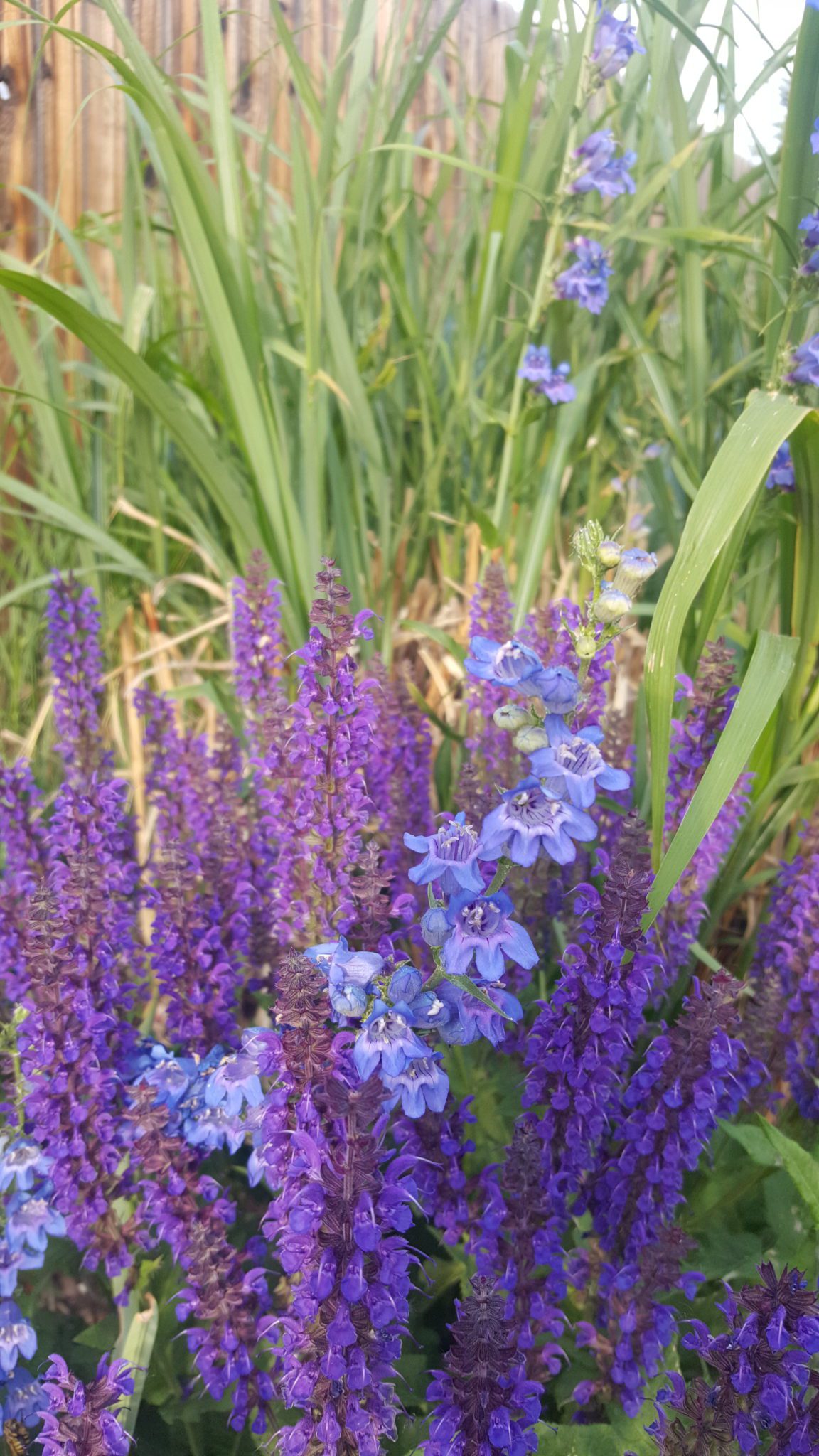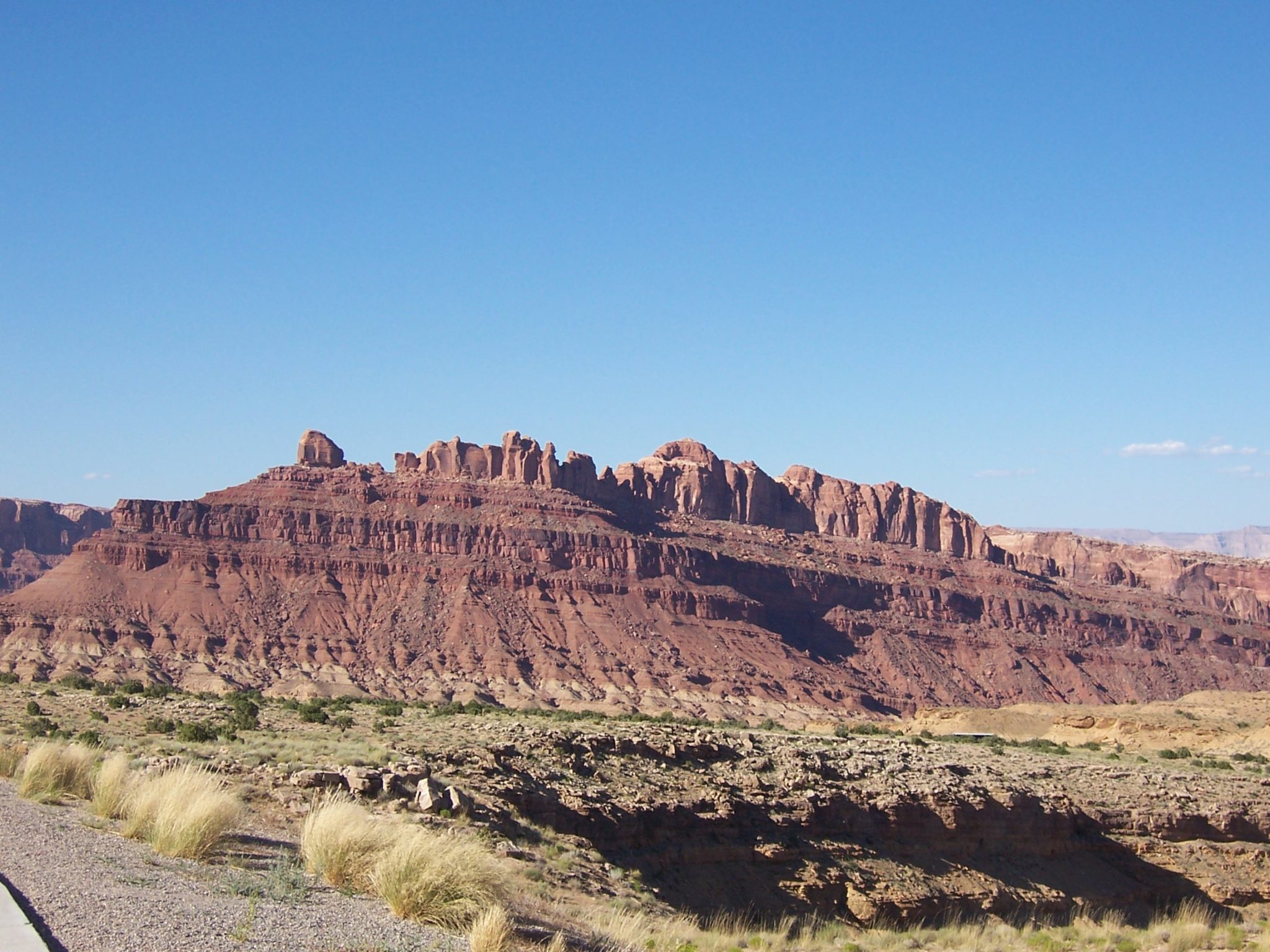
There is a saying out here in the bone-dry West: “whiskey is for drinking, water is for fighting”.
There is some debate as to where the American West begins. Myself, I view 100⁰ longitude (or the 100th meridian) as the demarcation point, because once you get west of the 100th meridian, annual precipitation drops off dramatically. Annual average precipitation east of this divide is over 20″ annually, and irrigation is usually not required for human habitation. Whereas the average (note I said average; there are obvious exceptions, such as the Pacific Northwest and the mountain regions) west of the divide is less than 20″ annually, and irrigation is a must if people are going to live here.
Below is a map I found that shows the worst light pollution in the lower 48. Even though this map has nothing to do with water, you can see the impact the lack of water has on human settlement. That dramatic line between high and low light pollution is the 100th meridian. A few highly irrigated regions such as southern California, Denver, Salt Lake City and Phoenix, or the rainy Pacific Northwest, stand out like oases in a vast and empty desert.
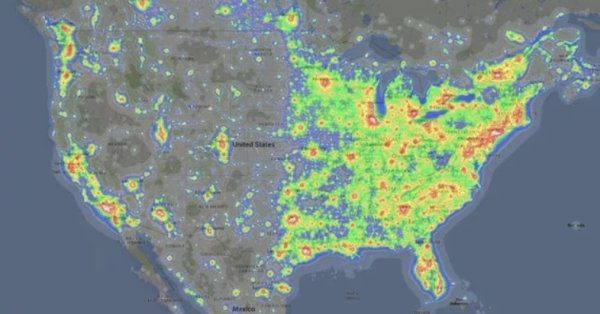
Water can be a major source of conflict out here in the West, and it always has been. In the 1800’s people literally fought and killed each other over water. While people nowadays no longer resort to murder over water rights, ugly conflicts can and do still arise to this day.
As an example: Bonny Lake State Park in Colorado was created in 1956 as a fishing and recreational site just a few miles from the Kansas border. The state of Kansas protested, and after a long and costly courtroom battle the Supreme Court determined that Colorado was improperly denying the state of Kansas billions of gallons of water that was rightfully theirs. The park was closed in 2011 and the water released to flow downstream. The reservoir no longer exists.
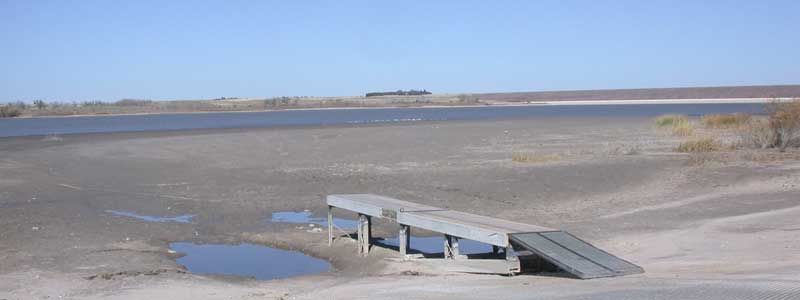
Water out here is taken very seriously, and water issues are only going to get worse as more and more people make the West their home.
Here in my hometown along the Colorado Front Range, you can generally tell when a housing development was built just by looking at the size of the yard. Houses built from the late 50s/early 60s all the way to the 1990s tend to be relatively small but are usually surrounded by decent sized yards. Sometime in the late 1980s the city planners began to realize that with all the people moving into the area, sooner or later there would not be enough water available for all the town’s residents. From that point on, the houses got bigger while the lawns shrunk to the size of postage stamps.
Drought tolerant landscaping
Which brings us to gardening and the attendant water conservation issues out here in the West, and that most misunderstood gardening concept called “Xeriscaping”.
Let’s go over what xericape is not. It is not a yard full of red lava rock with desiccated and dying plants plopped higgledy-piggledy here and there. I once heard this type of yard called “Mars-scaping”. I wish I could find a picture of this to use as an example of how not to xeriscape, but Google Images came up dry (pun intended). I’m sure you know exactly the type of yard that I’m talking about though.
I wish I could say that my lawn and garden is a true xeriscape, but it’s not. For one thing I have a lawn, which is the biggest water hog in my landscape. But over the years I have slowly reduced the size of my lawn and replaced it with either hardscaping or drought tolerant plants. Many, if not most, of the plants in my gardens are at least somewhat drought tolerant. A few of them would be classified as truly xeriscape.
What’s the difference, you might ask? I have read that a “drought tolerant” plant is just that: it tolerates drought. I will not, however, perform at its best in drought conditions. I may not grow to it potential size, and it may not flower as profusely as it would under ideal conditions. “Xeriscape” plants, on the other hand, actually prefers dry and/or hot conditions and will perform to its potential with little or no moisture.
Here are just a few of the more drought tolerant plants that I have in my yard: Jupiter’s Beard, Desert 4 o’clock, Russian sage, globe thistle, Blue Mist spirea, several varieties of penstemons, ornamental grasses such as switch grass and Blue Oat grass and bindweed (o.k., that one is the bane of my gardening existence, but I’ve got to admit the damn thing is drought tolerant). There are also plants in the borders that one wouldn’t think to classify as drought tolerant but do just fine with the limited amount of water provided. For example, MrsVintage’s peony positively flourishes every year with next to no supplemental watering.
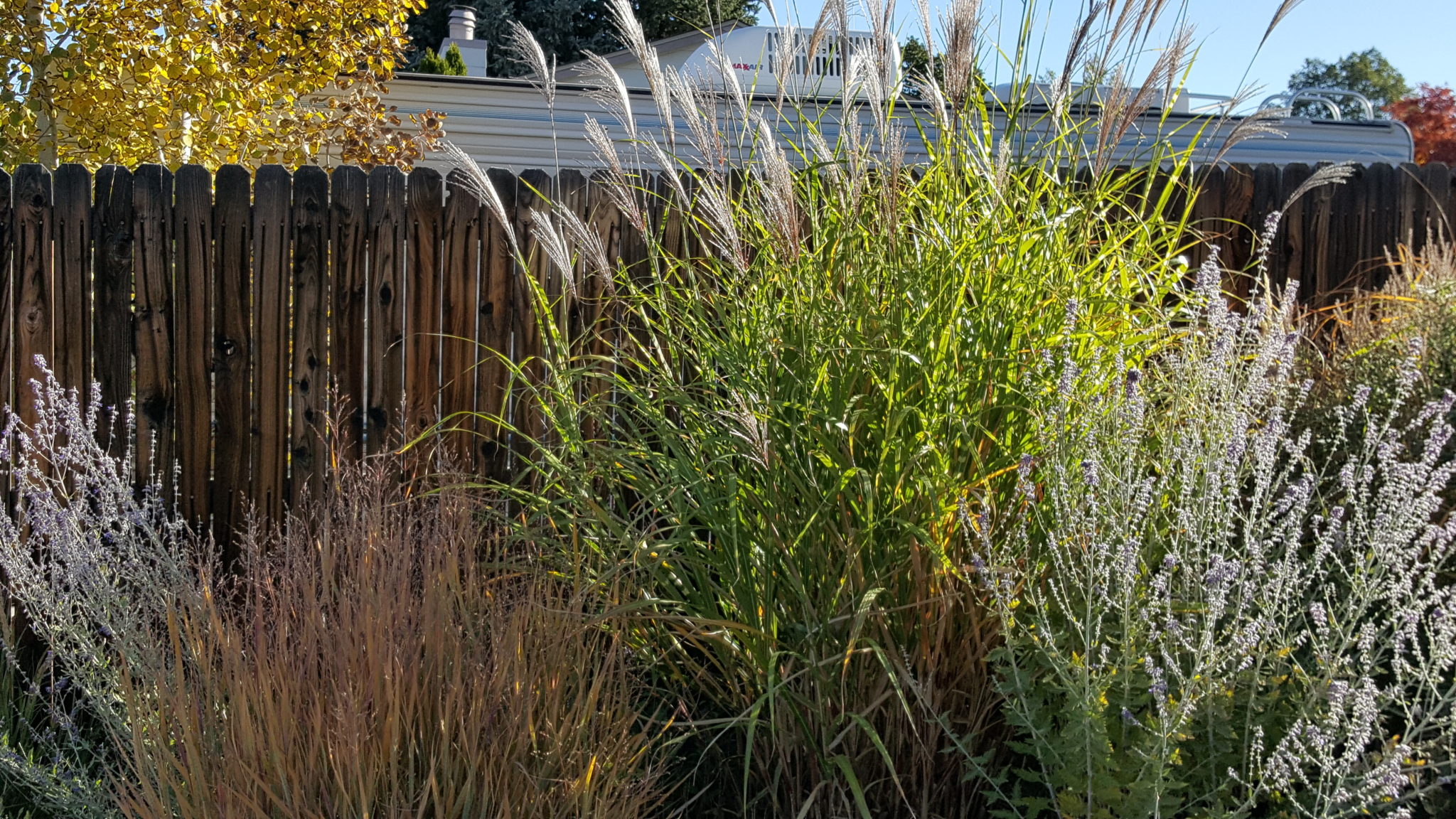
I’m something of a gardening Darwinist. I only deep water the gardens once a month during the dog-days of summer (maybe twice if it’s particularly hot and dry) and if a plant can’t hack it with that, it sucks to be it.
Well, except for my lawn. I probably baby and spoil that entirely too much. It’s just that I find a well maintained lawn peaceful and Zen-like.
I don’t heavily fertilize my gardens. The more you fertilize plants the lusher they get, and lusher plants require more water. Instead, I apply a light dusting of an organic fertilizer in spring, and I only do that because I use a wood-chip mulch. Organic mulches such as wood break down over time, and as they go through the process of decomposing they (briefly) suck up other organic matter and minerals from the soil. So some organic fertilizer and compost top-dressing help offset the depletion caused by the wood decomposing.
In spite of this “restrictive” regimen I’ve imposed on the garden, most of the plants come back hale and hearty every year.
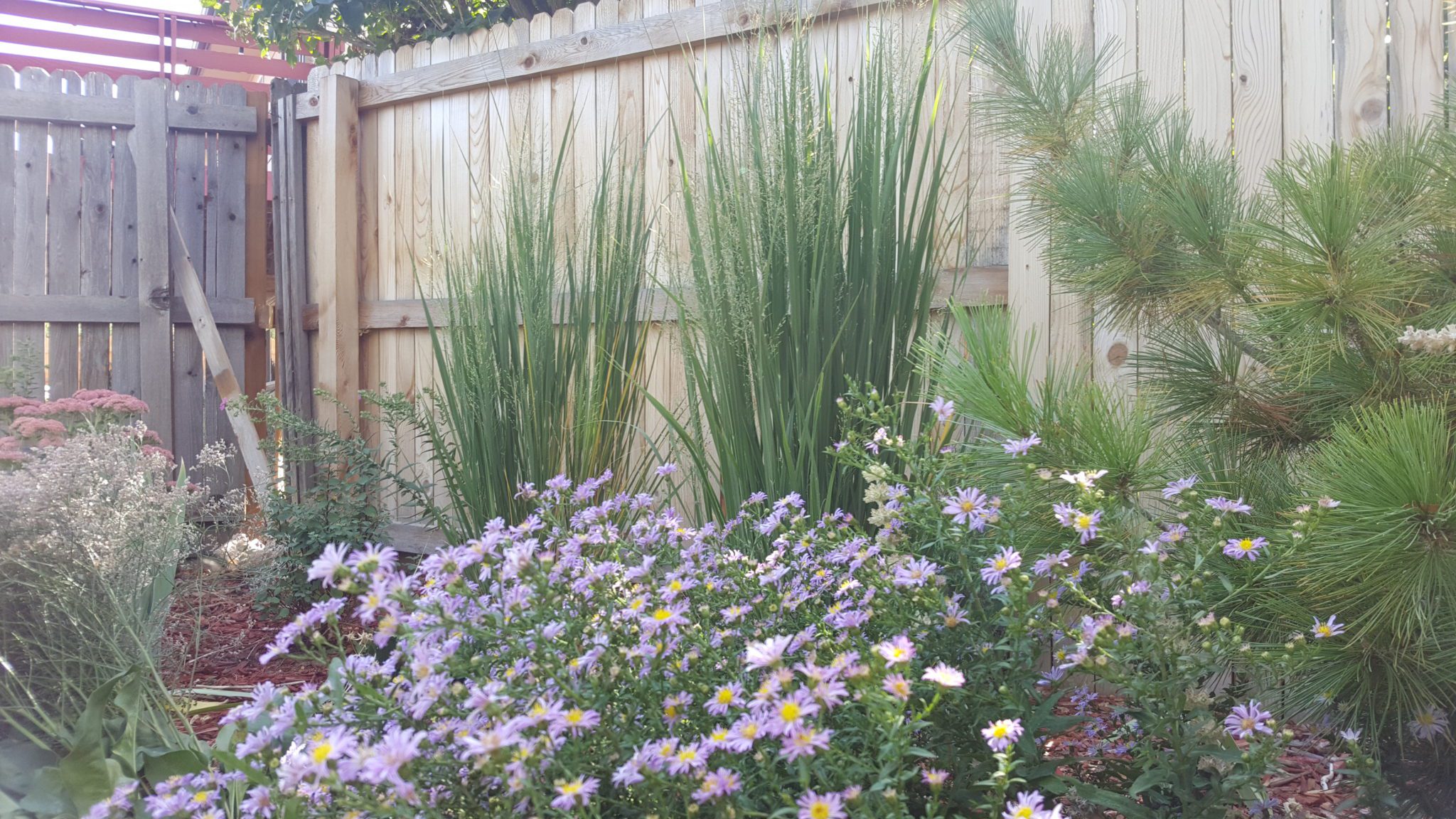
Speaking of mulch, I replenish my mulch every year or two. A good layer of mulch helps cool the soil in summer and reduces moisture loss. Mulch is also good for reducing weeds, and it makes the garden look “finished” in my opinion.
During my spring cleanup I leave a fair amount of “litter” from last year’s garden. This also returns some organic matter back to the soil, much like a mulching mower returns the chopped up grass blades to the lawn.
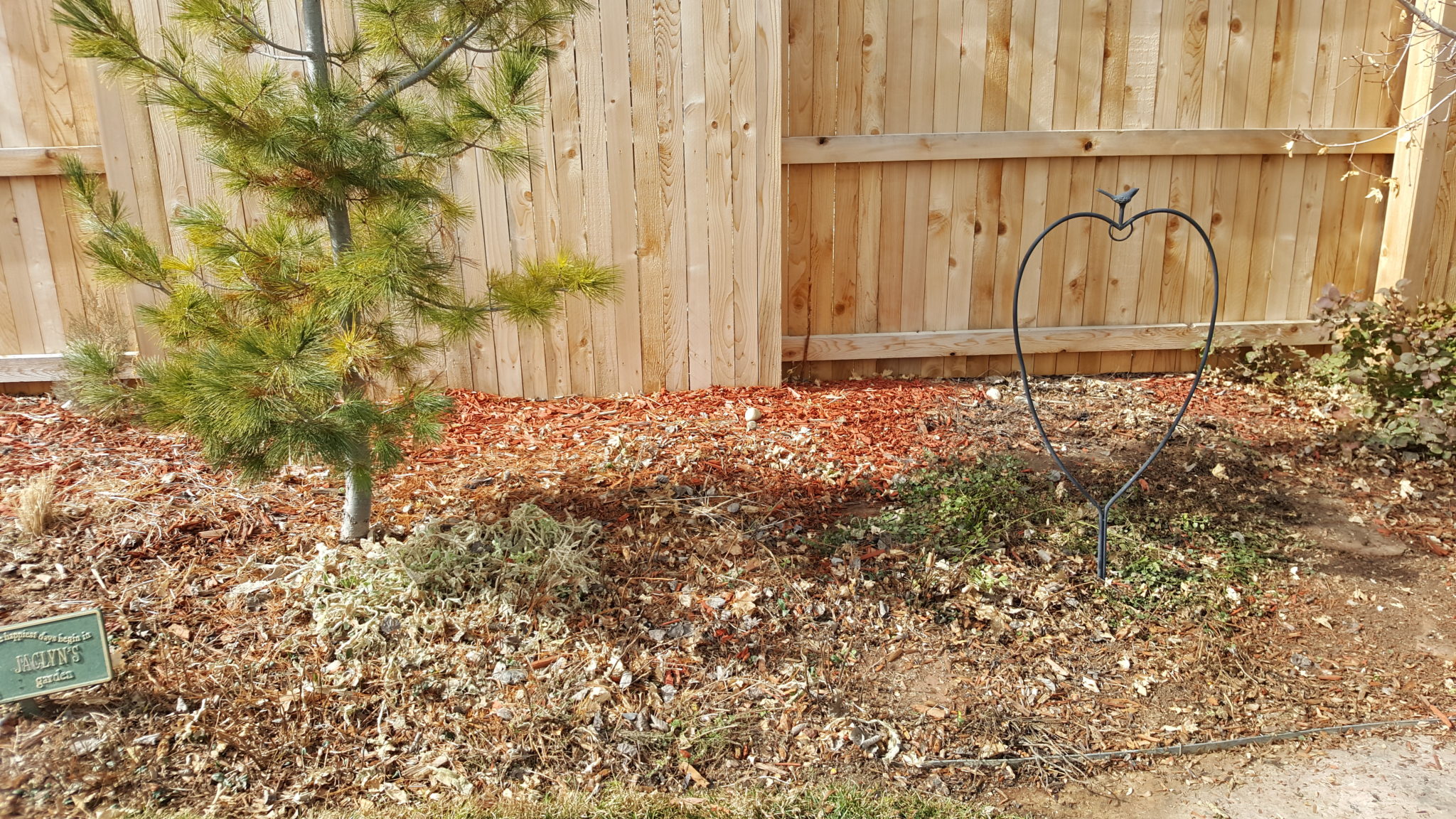
Install hardscaping
I mentioned above that I have reduced the size of my lawn a bit. It could probably stand to be reduced further, but that’s a project for down the road. The pictures below show a before and after of the installation of the patio I built in the backyard several years ago.
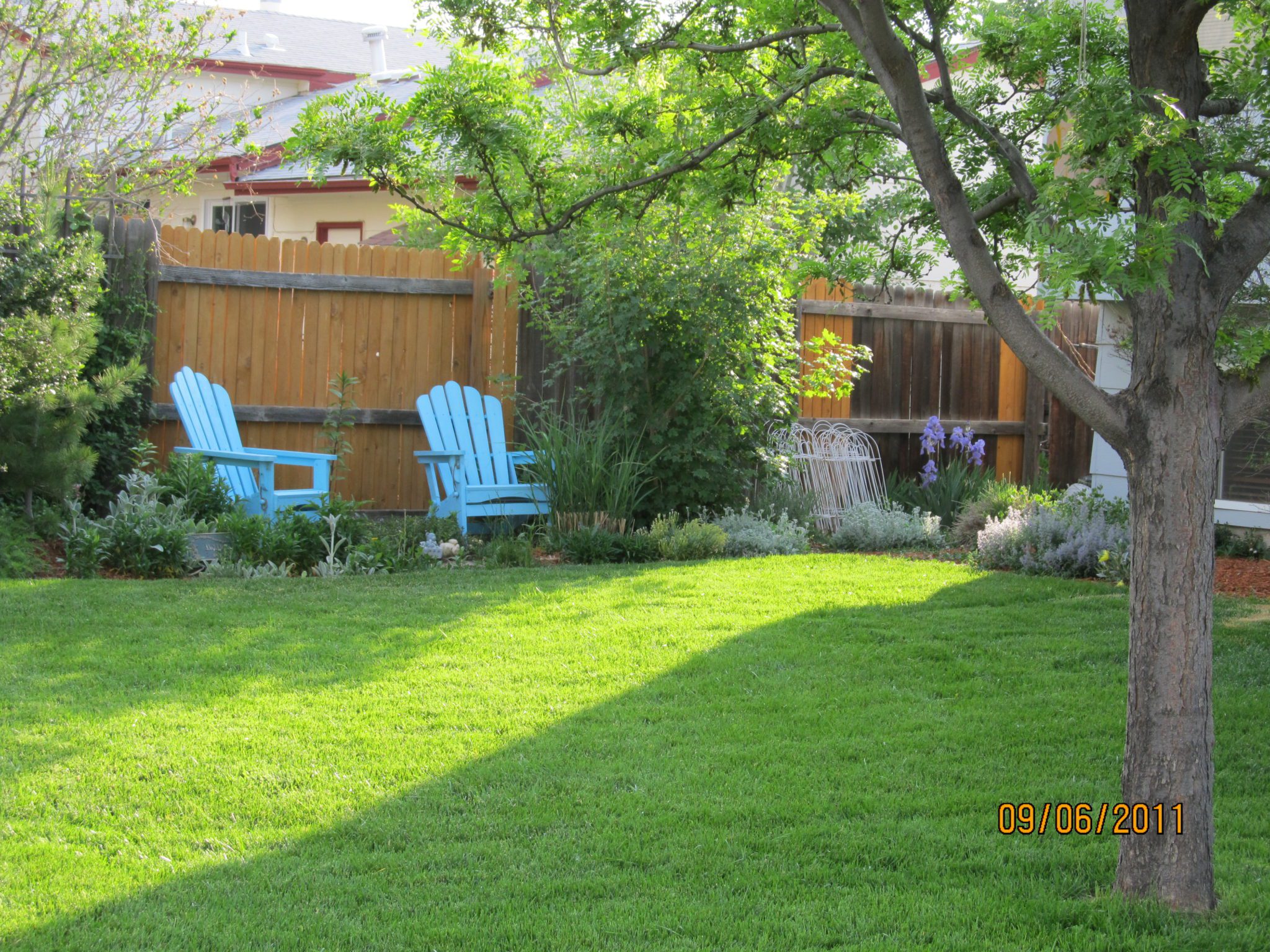
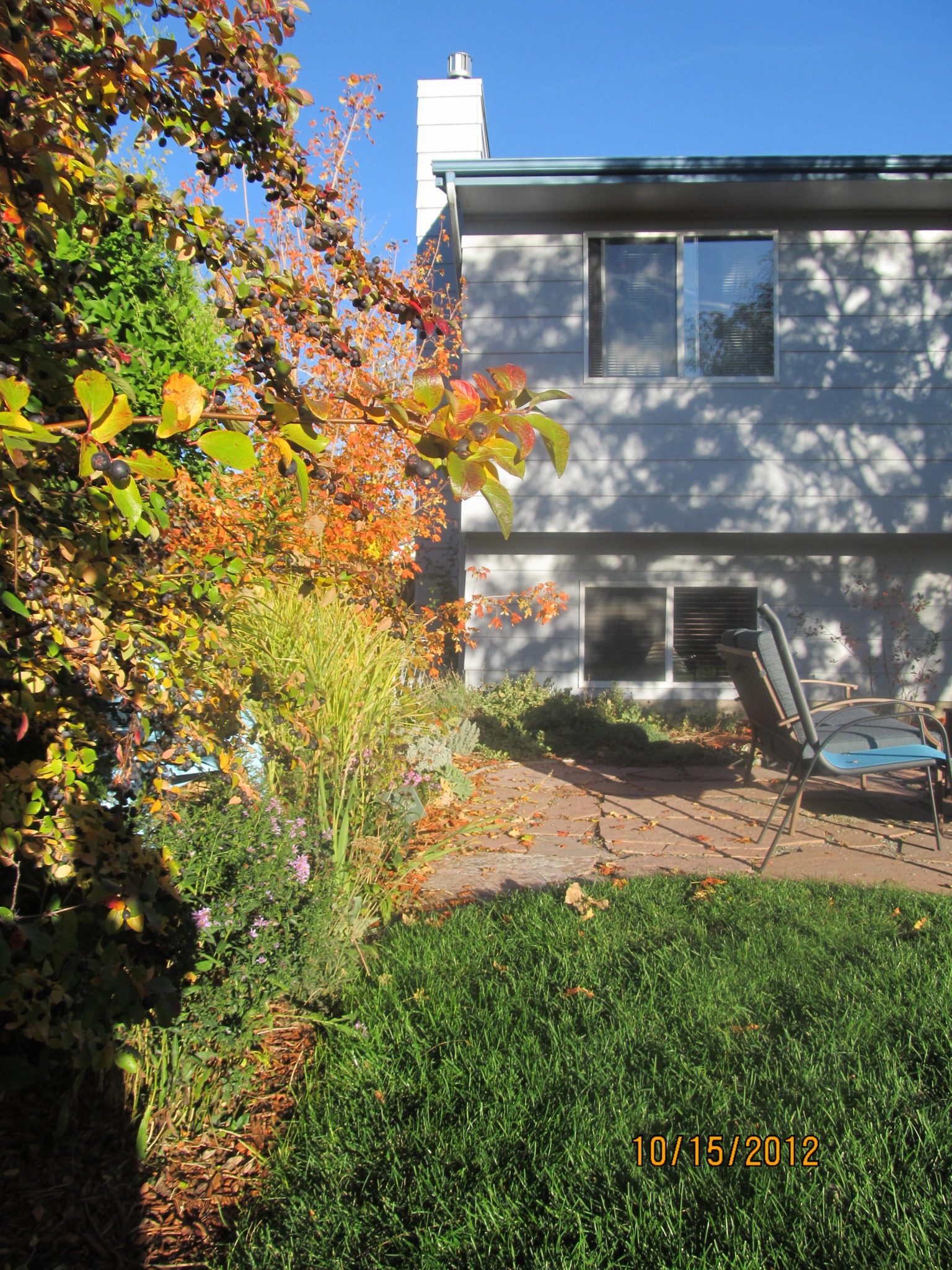
A great deal of water can be conserved by removing thirsty sod and replacing it with some type of hardscaping. Hardscaping can be a patio such as you see above, or it could be a stone or gravel path, a deck, a gazebo, or even (counter-intuitively enough) a pond, so long as the pond is deep enough to stay cool during the hottest parts of summer to counter the effects of evaporation.
In conclusion
My point being, assuming I have a point, is that while water issues are going to continue to be an important issue here in the American West for a long time to come, there is no reason why we can’t continue to have awesome and beautiful landscapes. We just have to adjust or expectations to the evolving reality.
What methods do you employ to make your landscape more drought tolerant? What has worked and what hasn’t? And what is your favorite xeric or drought tolerant plant (assuming you have one)? Feel free to share pictures!

